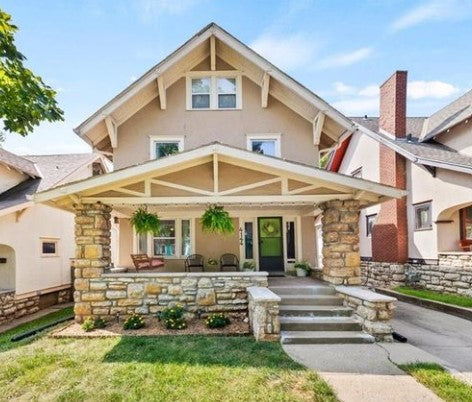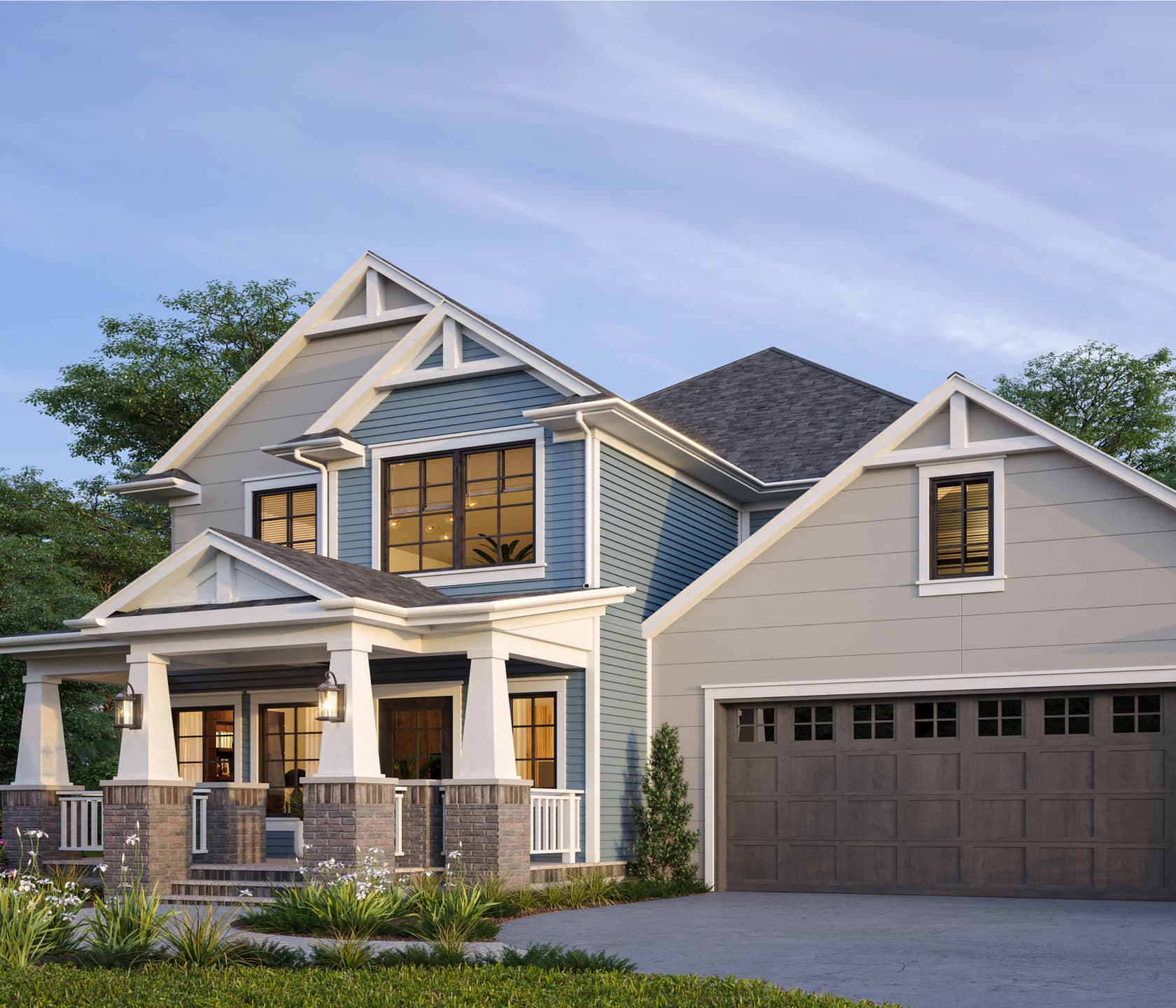Why a craftsman style house Stands Out in Residential Architecture
Wiki Article
The Function of Arts & & Crafts Architects in Elevating Architectural Services in Residential Design
Arts and Crafts architects considerably affect household style with their dedication to workmanship and sustainability. They prioritize handmade details and natural materials, which enhance both visual appeals and community identification. By including clients in the design procedure, these architects develop distinct living areas that reverberate with individual tastes. This technique elevates inquiries about the future trajectory of residential architecture and its prospective impact on community dynamics. craftsman style house. What lies in advance for this timeless design approach?
The Principles of Arts and Crafts Architecture
The essence of Arts and Crafts architecture depends on its commitment to workmanship and simpleness. This architectural movement emerged in the late 19th century as a feedback to automation, stressing the worth of handcrafted details and natural products. The principles of Arts and Crafts architecture focus on capability and harmony with the atmosphere. Structures typically include low-pitched roof coverings, large eaves, and exposed rafters, promoting a feeling of unity with nature.Artisans played a considerable role in this design, often incorporating decorative aspects like stained glass, ceramic tiles, and woodwork, which mirror regional workmanship. The shade combination has a tendency to be natural and restrained, enabling structures to mix effortlessly right into their environments. On top of that, the style motivates open flooring plans and communal areas, fostering a sense of togetherness. In general, the concepts of Arts and Crafts architecture celebrate the elegance of simpleness and the value of human connection to both nature and area.

Sustainable Practices in Residential Design
While the demand for ecologically responsible living remains to expand, sustainable methods in property layout have gained significant traction amongst architects and property owners alike. Architects are significantly integrating energy-efficient innovations and lasting products into their styles, intending to reduce carbon footprints and enhance power preservation. Strategies such as easy solar style, environment-friendly roofings, and rainwater harvesting systems are coming to be basic elements of modern-day residential architecture.The option of in your area sourced products minimizes transportation exhausts and supports regional economic climates. Focus on natural light and air flow not just improves interior air quality yet additionally reduces dependence on synthetic illumination and climate control systems. These lasting techniques show a dedication to protecting the environment while offering home owners with comfortable, reliable living rooms. As awareness of environmental issues grows, the integration of sustainability in domestic layout is poised to come to be a specifying feature of modern architecture, guided by the principles developed by Arts and Crafts architects.
Customization and Personalization in Home Design
Customization and customization in home design have actually arised as essential trends in feedback to the expanding desire for special living environments that reflect specific preferences and way of livings. Property owners progressively look for to tailor rooms that resonate with their personal identifications, leading to a much more purposeful connection with their living rooms. craftsman style house. This activity motivates architects to engage customers in the design procedure, promoting cooperation that assures the final outcome embodies the home owner's visionAspects such as bespoke layouts, personalized products, and tailored surfaces permit a diverse series of expressions in property style. Arts and Crafts architects play a pivotal duty in this advancement, stressing craftsmanship and quality. Their concentrate on integrating imaginative elements with performance assurances that each home is not only cosmetically pleasing however also distinctly matched to the inhabitants' needs. As a result, this emphasis on customization improves the total residential experience, creating areas that are both personal and enduring.

The Effect of Arts and Crafts Architects on Neighborhood Aesthetic Appeals
As areas develop, the influence of Arts and Crafts architects greatly shapes their visual landscape. By emphasizing handmade details, natural products, and conventional building methods, these architects create homes that resonate with their surroundings. Their layouts typically include neighborhood plants, structures, and colors, fostering a sense of consistency in navigate here between developed atmospheres and nature.In addition, the Arts and Crafts movement promotes neighborhood identification via architectural use this link continuity. By urging house owners to take on similar design principles, neighborhoods create a cohesive personality that improves visual charm. This architectural uniformity not only enriches the visual experience however also imparts a feeling of pride amongst residents.
The emphasis on sustainability and workmanship in Arts and Crafts architecture lines up with modern-day values, making these designs relevant in contemporary setups. Ultimately, Arts and Crafts architects add considerably to the total appeal and cultural integrity of communities, leaving a long lasting effect on their visual legacy.

Future Patterns in Arts and Crafts Architecture
With an increasing focus on sustainability and customization, future fads in Arts and Crafts architecture are positioned to blend standard workmanship with modern advancement - craftsman style house. Architects are most likely to focus on eco-friendly materials, utilizing recovered wood and natural stone to improve the sustainability of domestic styles. The combination of wise home innovation will end up being prevalent, enabling personalized living experiences without jeopardizing aesthetic integrityIn addition, the revival of artisanal techniques will certainly promote a renewed gratitude for handcrafted components, such as bespoke kitchen cabinetry and personalized floor tile job. Future designs may additionally mirror an emphasis on community-oriented spaces, encouraging interaction and connection among residents. Outside living locations will get prominence, flawlessly integrating nature right into the home atmosphere. As Arts and Crafts architecture progresses, it will certainly proceed to honor its origins while adapting to contemporary needs, developing unified areas that show individual worths and way of lives.
Frequently Asked Inquiries
go to websiteWhat Inspired the Arts and Crafts Movement in Architecture?
The Arts and Crafts activity in architecture was inspired by a response versus industrialization, highlighting handmade high quality, natural materials, and a return to typical craftsmanship, aiming to create harmonious, useful spaces that celebrated creativity and uniqueness.Just how Do Arts and Crafts Architects Collaborate With Clients?
Arts and crafts architects team up with customers through open dialogue, focusing on personal demands and appearances. They highlight craftsmanship and sustainability, promoting a collaboration that integrates the customer's vision with the designer's proficiency in design and materials.What Materials Are Commonly Made Use Of in Arts and Crafts Houses?
Usual products in Arts and Crafts homes include all-natural wood, rock, and brick, stressing craftsmanship and organic appearances. These aspects create a warm, inviting environment, showing the movement's commitment to high quality and simplicity in style.How Do Arts and Crafts Layouts Enhance Indoor Living Rooms?
Arts and Crafts styles boost interior living rooms by promoting natural light, open flooring strategies, and handcrafted information. These components promote a cozy, inviting ambience, motivating a connection between homeowners and their settings through thoughtful, practical visual appeals.What Are Some Famous Examples of Arts and Crafts Architecture?
Famous examples of Arts and Crafts architecture consist of the Gamble House, Greene and Greene's work of art in California, and the Robie House by Frank Lloyd Wright. These structures showcase handcrafted details and consistency with nature, specifying the movement's essence.Report this wiki page